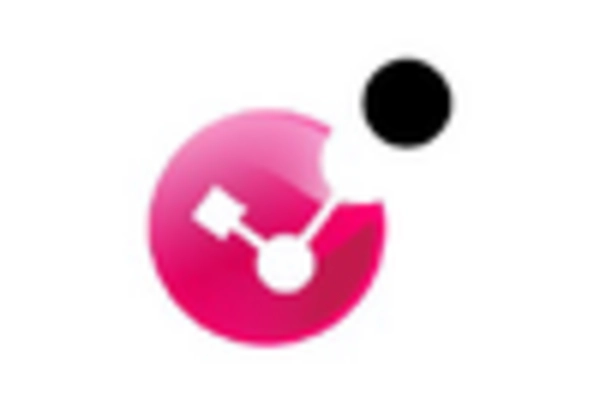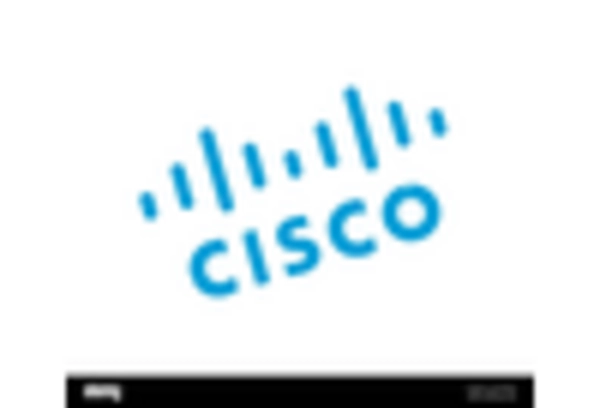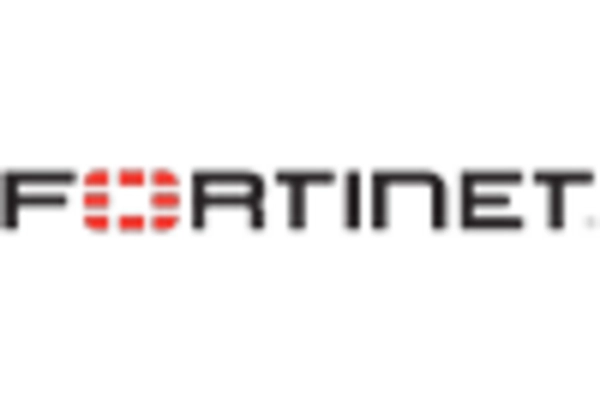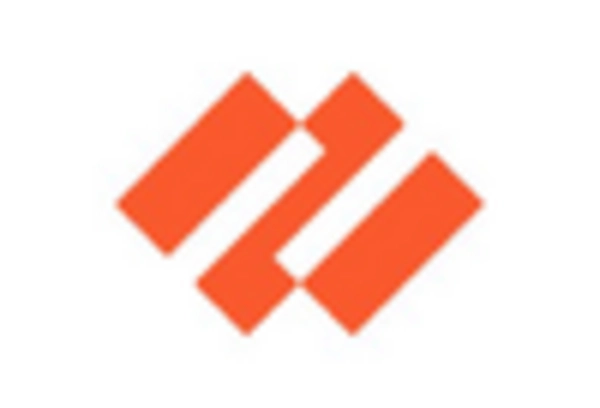Rising Cybersecurity Threats
The increasing frequency and sophistication of cyber threats in the UK has propelled the demand for robust security solutions. The unified threat-management market is experiencing growth as organizations seek comprehensive protection against malware, ransomware, and phishing attacks. In 2025, it is estimated that cybercrime could cost the UK economy over £50 billion annually, highlighting the urgency for effective security measures. Businesses are investing in unified threat-management solutions to mitigate risks and safeguard sensitive data. This trend indicates a shift towards integrated security systems that can address multiple threats simultaneously, thereby enhancing overall security posture. As the threat landscape evolves, the unified threat-management market is likely to expand, driven by the need for advanced protection mechanisms.
Increased Regulatory Compliance
The unified threat-management market is significantly influenced by the stringent regulatory environment in the UK. Organizations are required to comply with various data protection regulations, such as the General Data Protection Regulation (GDPR) and the Data Protection Act. Non-compliance can result in hefty fines, reaching up to £17 million or 4% of annual global turnover, whichever is higher. As a result, businesses are increasingly adopting unified threat-management solutions to ensure compliance and protect sensitive information. The market is expected to grow as companies prioritize security measures that align with regulatory requirements. This trend underscores the importance of integrated security solutions that not only protect against threats but also facilitate compliance with legal obligations.
Growing Demand for Remote Work Security
The shift towards remote work in the UK has created new security challenges, driving the growth of the unified threat-management market. As more employees work from home, organizations face increased risks related to unsecured networks and devices. In 2025, it is projected that remote work will account for over 30% of the UK workforce, necessitating enhanced security measures. Unified threat-management solutions offer comprehensive protection for remote access, ensuring that employees can securely connect to corporate networks. This trend indicates a growing recognition of the need for integrated security solutions that can adapt to the evolving work environment. As remote work becomes a permanent fixture, the demand for unified threat-management solutions is likely to rise.
Rising Awareness of Cybersecurity Risks
There is a growing awareness of cybersecurity risks among businesses in the UK, which is significantly impacting the unified threat-management market. As high-profile data breaches and cyber incidents make headlines, organizations are becoming more proactive in addressing their security needs. Surveys indicate that over 70% of UK businesses consider cybersecurity a top priority, leading to increased investments in unified threat-management solutions. This heightened awareness is driving demand for comprehensive security systems that can provide multi-layered protection. As organizations recognize the potential financial and reputational damage caused by cyber threats, the unified threat-management market is expected to see sustained growth. This trend suggests a shift towards a more security-conscious business environment.
Technological Advancements in Security Solutions
The rapid advancement of technology is reshaping the unified threat-management market in the UK. Innovations in artificial intelligence, machine learning, and automation are enhancing the capabilities of security solutions. These technologies enable organizations to detect and respond to threats more effectively, reducing response times and minimizing potential damage. In 2025, it is anticipated that the market for AI-driven security solutions will grow by over 25%, reflecting the increasing reliance on advanced technologies. As businesses seek to stay ahead of emerging threats, the adoption of unified threat-management solutions that leverage these advancements is likely to accelerate. This trend highlights the importance of integrating cutting-edge technology into security strategies.

















Leave a Comment